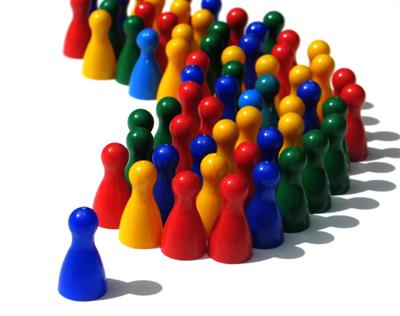In the third of his series on organisational change models, Larry Reynolds looks at the Nadler and Tushman congruence model.
Human beings transform food and oxygen into energy and action. Organisations transform resources into products and services. If you want to understand how this works in humans, your guide is Gray’s anatomy: If you want to understand how this works in organisations, your guide is Nadler and Tushman’s congruence model.
According to David Nadler and Michael Tushman, there are four key components of organisational anatomy: The people, the tasks, the formal organisation and the informal organisation.
1. The people component consists of the individuals involved in the enterprise - their personality, skills and motivation
2. The task component consists of job roles and how they interact with each other
3. The formal organisation consists of the all the structures and procedures that make the organisation work – the organisational chart, performance management and reward systems, and so on...
4. The informal organisation is the really interesting bit. It’s all those organisational practices that are rarely written down, but which make a big difference to how people behave day to day: Organisational politics, organisational culture and issues of power are all part of this component. The organisation will struggle if there is a mismatch between these four components.
For example, if you have a formal performance management system that claims to reward high performance, but what really happens is that senior managers reward their favourites, then this mismatch will affect the overall success of the company. These four components interact with each other in complex and unpredictable ways: When you tamper with one bit there are all sorts of knock on effects to the other parts of the system.
You may think that introducing clearer job descriptions (in the task component) will make the organisation more effective – but this won’t happen if it adversely affects the culture of flexibility (informal organisation) that has been one of the company’s strengths in dealing with its customers.
 "Change in one part of the organisation can have chaotic knock on effects on others. The real power of the Nadler Tushman model is that it gives you a tool for analysing and understanding how those knock on effects work."
"Change in one part of the organisation can have chaotic knock on effects on others. The real power of the Nadler Tushman model is that it gives you a tool for analysing and understanding how those knock on effects work."There’s a great icebreaker trainers use called ‘equilateral triangles’. The trainer asks everyone in the room to stand up, and choose two other people in the room. On the given signal, everyone has to move so that they get into an equilateral triangle with the two people they have chosen – without talking. There’s a lot of milling around, and just when it looks as if everyone is in place, someone moves and the process seems to start again. The surprising thing is, it almost always settles down after a minute or two, however many people there are in the group. As well as being a quick and easy icebreaker, it’s a great metaphor for how organisations behave.
Change in one part of the organisation, or even in one person, can have chaotic knock on effects throughout the rest of the organisation. The real power of the Nadler Tushman model is that it gives you a tool for analysing and understanding a bit more about how those knock on effects work.
Pros and cons
The model’s greatest strength is to remind change leaders that if they mess with one bit of their organisation there will be knock on effects elsewhere. One of the most common reasons that organisational changes fail is that they focus on just one area, and neglect the others. For example, restructuring (formal organisation) will probably make thing worse, not better, unless attention is given to the knock on effects on the politics, the power and the culture (informal organisation).
Giving people new job roles with more responsibility (task) is doomed to failure unless you make sure they are the right people, with the right skills and motivation (people). The model is also useful at analysing where changes are going wrong. If you are involved in a major change initiative, and it seems to be stuck or going backwards, a close look at the model will probably tell you why things are becoming increasingly pear shaped. On the downside, while the model is good at diagnosis, it’s not so helpful at telling you what you need to do about it. OK, our new customer focus initiative isn’t working because of organisational politics – what do I do now? A further weakness of the model is that it focuses too much attention on the internal workings of the organisation.
Change leaders need to be mindful of what’s going on outside the organisation too – what are our competitors up to for example? What impact on the environment does our company have? Are we operating in a way that is ethical and sustainable?
Alternative models
There are many change models that divide up the organisation into different bits. The Nadler and Tushman model is the simplest with just four components – people, task, formal organisation and informal organisation. Other models have five, six or even seven chunks. Perhaps the best known is McKinsey’s Seven S model, which invites you to analyse your organisation in terms of staff, skills, structure, systems, style, strategy and shared values.
Read the other articles in Larry's series:
John Kotter's leadership model
The change equation and change curve model
Larry Reynolds is an organisational change facilitator. For free resources on ethical and sustainable leadership, influence and change visit www.21stcenturyleader.co.uk.









